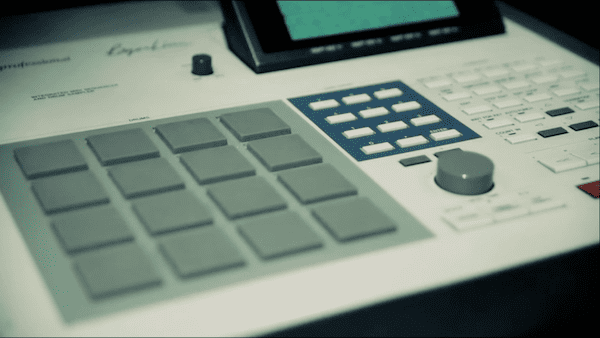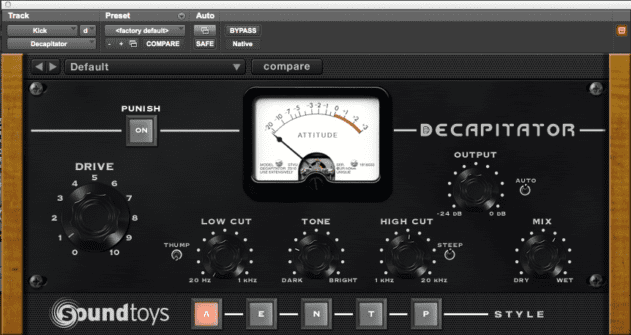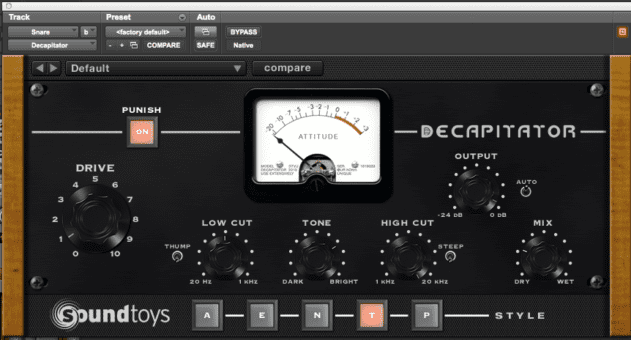Our latest beat programming and sound design tutorial focuses on the classic sound of early Detroit techno with a 909-based pattern which demonstrates a range of techniques for creating raw, vintage-style drum sounds.
Beat Dissected is a regular series in which we deconstruct drum patterns, showing you how to recreate them in any DAW. Just copy our grid in your own software to recreate the loop.
Here’s the beat we’re building today:
Audio PlayerTo download the samples for this beat, click here. The samples are provided on a completely royalty-free basis. They may not be sold or given away, either in whole or in part.
You must register for a free Attack account and sign up to receive our newsletter in order to download the samples. New members can register here. Existing members can log in here.
Spec
Tempo
120-125bpmSwing
55-60%Sounds
Roland TR-909 samplesStep 1
Staying true to one of the most iconic pieces of gear used to create so many early Detroit productions, the sounds in this beat all come from the Roland TR-909. We’ve run our 909 samples through an Akai MPC60 for the slightly gritty crunch the 12-bit sampling engine adds. If you don’t have access to any 12-bit hardware you could achieve similar results with a bitcrusher such as D16 Decimort.
We start with the kick, which is as simple as it gets: a four-to-the-floor pattern with no variation. You could add ghost hits if you really wanted, but this isn’t really the time or place to get too complex with the kick pattern. This beat is all about a straightforward, functional groove.
We’ve run the kick sample through SoundToys Decapitator to add subtle distortion, then squashed it with the compressor on SSL’s Duende Native Channel. The aim here is to add punch and introduce just a hint of distortion to make the kick more aggressive. You can see the Decapitator setting we’ve used in the screenshot below. (Click images to enlarge.)
Audio PlayerStep 2
For the snare we’ve used Decapitator again, this time on a more extreme setting (below). One of the classic Detroit techniques is to overdrive the inputs of an analogue mixing desk until they begin to break up. Using an analogue-style saturation effect is a good way to achieve similar results in the box.
If you’re using a real 909 you can adjust the tuning of the kick and snare in real time, but since we’re using samples we don’t have control over the original sound. Instead, we’ve pitched the sample down a couple of semitones. This gives a darker, grainier sound than adjusting it on the 909 itself. Rolling off the high end of the snare sound also helps to give a less hi-fi sound.
Audio PlayerStep 3
The rimshot helps to fill out the beat. Again, in sound design terms it’s a simple case of taking a 909 sample, running it through the MPC then pitching it down a semitone or two for that slightly grainy texture. We’ve also used a touch of reverb, mixed in at a very low level and resampled so that it becomes part of the decay of the sample itself, filling in the background of the beat with a subtle ambience.
Note that we haven’t used any velocity variations in this beat so far. Instead it’s the interplay of the parts which is going to provide most of the dynamic movement. The way the rimshot and snare patterns work against each other helps to fill in the gaps between kicks (note that the rimshot doesn’t ever hit on the same beat as a kick – it’s being used as a counterpoint rather than reinforcing the rhythm of the kick itself).
Audio PlayerStep 4
We’re using two different closed hi-hat sounds, both based on 909 samples with a little reverb and chorus added. The main difference is in the shape of the envelopes and the way they’ve been EQd. Hat 1 has a very sharp attack with lots of high end to cut through the mix, while Hat 2 is a much softer sound with a slower attack and a slightly longer decay.
Although there is a very subtle use of velocity on Hat 2, again it’s the interplay of the hi-hats that helps to create dynamic movement. Adjusting the relative levels of these sounds can give the beat a very different feel.
Audio PlayerStep 5
Finally, we add a third hi-hat: a simple open hat sound, again resampled with a touch of chorus and reverb. This is triggered on every off beat. The three hat sounds can be muted individually to provide variations of the beat during different parts of the arrangement. Different effects can also be created by assigning the hi-hats to different mute groups. The standard approach is to assign all three to the same group so that the closed hats cut off the decay of the open hats, but a looser, rougher effect can be created by allowing the tails of the open hats to ring on through the closed hats.
We haven’t used any bus processing here, preferring to stick with a raw, unprocessed sound. A tape emulation plugin such as U-He Satin could be employed to give a subtle gluing effect and a little more saturation if necessary.
Audio Player
To download the samples for this beat, click here.








03.53 AM
Thanks for sharing! Much love!
09.48 PM
You guys are awesome !!
06.59 AM
niceone
01.41 AM
Kudos, as alwais. Perfect in pair with Detroit Swindle’s interview 🙂
01.34 AM
Super!
10.16 PM
hej nice as always thx.
but one thing- i wonder about the kickdrm treatment. I i coudnt go with my 909 sample kick i this type of direction. What about some general EQ Settings and Compression ratio,attack (maby parallel comp?), to get this type of kick???
THX 🙂
10.22 PM
Hey Holg
That’s a whole tutorial in itself! We’ll try to cover more details of kick drum processing in the near future.
03.39 AM
Once again, a really great tutorial. These make me come to this website. Keep it up!
10.48 AM
Hi, I’am a Detroit Techno Producer and use a 909 to the drum session but i not follow this scheme!
02.23 PM
How does this 55-60% swing setting translate in Maschine? Is this a global swing, because a global swing set to this amount in Maschine is far too much?
02.24 PM
Hi Damien
We use the convention where 50% is straight timing. This article should explain all:
http://www.attackmagazine.com/technique/passing-notes/daw-drum-machine-swing/
05.01 AM
In a better world people would take this a series of tips and a starting point for something a bit more original. In this world, we can now expect a deluge of mediocre, forgettable “motor city techno” mp3 tracks on Soundcloud and Bandcamp. This isn’t producing music but idolatrous worship of the myth of yesterday. Even down to the GUI styling as “hardware”.
08.10 PM
Yo: BIG SHOUT out to attack magazine for this nice little goodie. Finally some proper support dedicated to the underground!!!!
Here`s what i came up with, altough not with the proposed software, but a MPC1000 🙂
http://soundcloud.com/hauzkatze/in-the-deeeee
nothing fancy, just wanna show some respect and appreciation!
08.41 AM
Right on Attack mag, right on.
05.52 PM
Why doesn’t the author write his name? Who writes these?
05.52 PM
* his / her name
04.32 AM
These are good tutorials for begginers wanting to know basics. What you should do is move on from the drum programming and onto basic step by step techniques covering every element of the track, basslines, pad, strings, leads etc.. nothing to fancy just to get a basic idea of what is needed to make a basic track
12.05 PM
@Truth Wrote:
I know the reason for his criticism of the users of this pattern. On the other hand it is also very interesting what Attack shows us there. The truth lies somewhere in between.